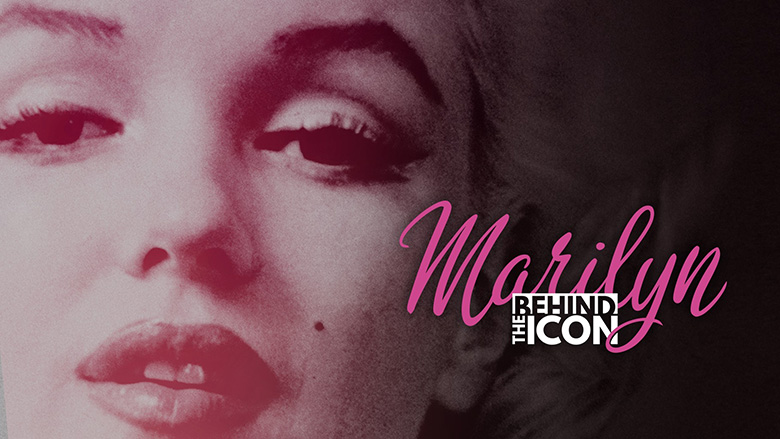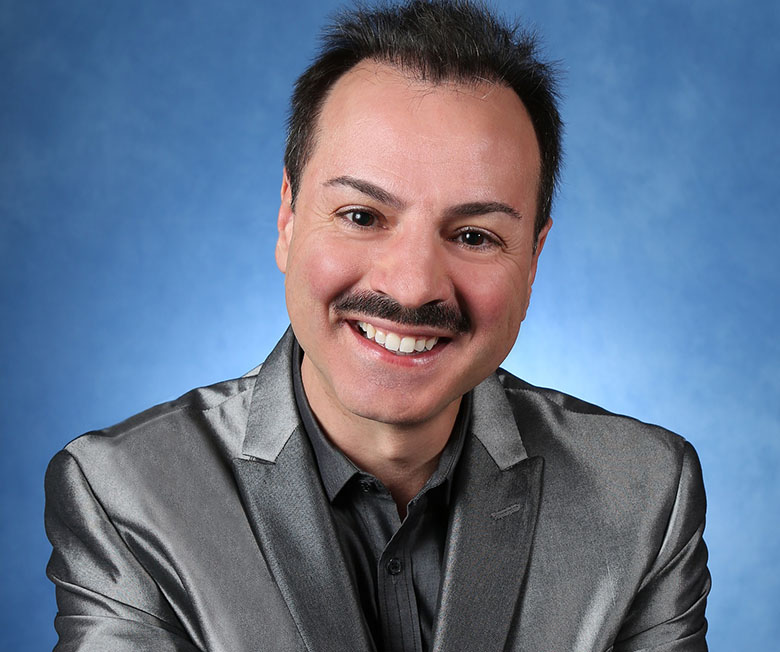An Interview with Gary Vitacco-Robles
by bill biss –

That’s Monroe … Marilyn Monroe. You see her on film and still revered as a beloved icon, but do you truly know what she went through in her short life? That’s exactly what the podcast is presenting in Marilyn: Behind The Icon.
The history of her life is presented and fact-based by the team responsible for only using the truth and that’s to be applauded. It wasn’t always a bed of roses for Monroe, and talking with Gary Vitacco-Robles … well, I’ll let him explain why. Leave your potato chips and champagne at the door.
Let’s talk about how Marilyn: Behind The Icon started and this podcast production came to be?
After releasing my two-volume Icon: The Life, Times, & Films of Marilyn Monroe, I appeared on various local, national and international radio shows. Randall Libero of Voice of America radio approached me to become a panel member on a weekly show, Goodnight Marilyn Radio, which was promoting a film fictionalizing Marilyn Monroe’s death within the context of a film noir. Nina Boski of LifeBites Global was the host, and for three seasons, I was one of her weekly panel members. The intention of the series was to explore the facts surrounding Marilyn’s passing, but my role was focused on sharing her remarkable life story from a mental health perspective, as I’m a licensed mental health counselor and National Certified Counselor, in addition to being a biographer.
Nina’s background is in transformational coaching, so we saw value in focusing on the adverse childhood events and intergenerational mental illness that impacted Marilyn, and how she navigated through trauma and mental illness to achieve international greatness as an actress and enduring icon. We believed that Marilyn’s true story of resiliency could inspire others and promote increased public awareness of issues related to mental illness and addiction, and help to eliminate stigma in seeking support — the support not available to Marilyn during her era.
Nina was the first to introduce the idea of adapting my two-volume biography into a podcast. She, Randall and I formed a production company, and Randall and I starting writing scripts. The three of us hired actors and sound editors, and produced seven of 10 episodes for the first season of Marilyn: Behind the Icon.
Erin Gavin as Marilyn is a trip as she really captures the essence of her. Your thoughts on this?
Both finding the talented Erin and her enthusiasm in joining our team was serendipitous. She had portrayed Marilyn on stage. Erin captures the essence of Marilyn that will captivate and emotionally move the podcast audience. Her performance is textured. She will capture your heart. You will cheer when she triumphs, you will cry when she struggles with her history of trauma and mental illness.
Erin studied Marilyn’s natural speaking voice from audio interviews with journalists Georges Belmont and Richard Meryman. The script also uses Marilyn’s words whenever possible. She has Marilyn’s idiosyncratic intonation and articulation. Erin’s performance is amazing.
The podcast’s experience for the listener is an audio dramatization of Marilyn’s Monroe’s remarkable life with a narrator, actors dramatizing scenes with music and sound effects, and my commentary to provide insight into the events described.”
Please share your contributions as historian on Marilyn: Behind The Icon?
We based Episode 1 upon Monroe’s riveting six-page letter to Dr. Ralph Greenson documenting her experience at Payne Whitney Psychiatric Unit at New York Hospital and Columbia Presbyterian Hospital’s Neurological Institute in early 1961. We start near the end of her life and then go back in time to explain what led to Marilyn’s severe episode. My commentary connects the dots related to Marilyn’s documented symptoms and how they may apply to current diagnostic labels.
Then we return to earlier times to explain Marilyn’s family history. We depict Marilyn’s relatives and how their symptoms impacted their lives and the family. In fact, we focus on her mother’s life before Marilyn is born, and her relationship with a friend who eventually became Marilyn’s guardian. We also focus on Marilyn’s early childhood with a family of whom she wrote in her journal about physically abusing her. We dramatize little Norma Jeane’s escape into motion pictures as a way of coping with the adverse events in her life.
After each episode, Nina, Randall and I converse in a companion podcast, Norma Jeane: Discovering Truths. In these segments, we deconstruct each episode, discuss our sources and details not included in the dramatization, and explain how we constructed the drama based upon sources and research. We specify what is completely based on Marilyn’s interviews, journals or correspondence, and what sources we used to create dialogue. Randall and I use material from Marilyn’s journals, estate and auctions of her personal correspondence. We are very selective about sources, using only legitimate ones.

What is your hope in being such an integral part that this podcast achieves in the memory of Monroe?
Marilyn Monroe was an enormously strong and brave woman. She is the first major film star to disclose depression and childhood sexual abuse during an era when acknowledging or speaking openly about those realities were taboo. From an early age, Marilyn visualized a better life for herself by becoming an actress to provide validation, and she made it happen. She is the ultimate dreamer. It’s the power of positive attraction, visualizing your goals and making them become a reality.
I believe we might be the first to have portrayed Marilyn’s remarkable life within the context of her being a resilient survivor of trauma. We thought we knew Marilyn, but never before like this. One cannot really understand her without understanding the context of her trauma. Marilyn is also linked to intergenerational mental illness in her maternal family; she herself experienced mental illness, and self-medicated her symptoms with prescribed medication because there were limited treatment options for her.
The podcast’s experience for the listener is an audio dramatization of Marilyn’s Monroe’s remarkable life with a narrator, actors dramatizing scenes with music and sound effects, and my commentary to provide insight into the events described. We use temporal shifting, so an episode may begin with an event in Marilyn’s life but flashback to her early childhood and explain the events that led to the beginning scene. An episode may begin with Marilyn touring the Brentwood hacienda with a Realtor in her last month, then focus on Norma Jeane living briefly with her mother in 1934, and end with her dancing with Clark Gable at Romanoff’s in 1954. I see it as a hybrid of a documentary and a dramatized series.
Every episode is well-done. Do you have a favorite one out of the series?
First, thank you! It’s a challenge for me to identify a favorite episode, but I have favorite moments. I love the ending of Episode 1, when Marilyn finds hope following her psychiatric hospitalization. I love the way she metaphorically references her observation of signs of springs emerging in winter and how the words apply to her hope. I like the moment in Episode 4, when she discovers the tiles on the doorstep of the last home she purchases, the one in which she died, she reads the Latin inscription and the Realtor translates it to “My journey ends here.” She is correcting the past by laying down roots and finds comfort in those words.
Behindtheicon.com is the website where anyone can access the podcast. You can also listen on your favorite podcast platform such as Apple Podcast, Spotify and iTunes.